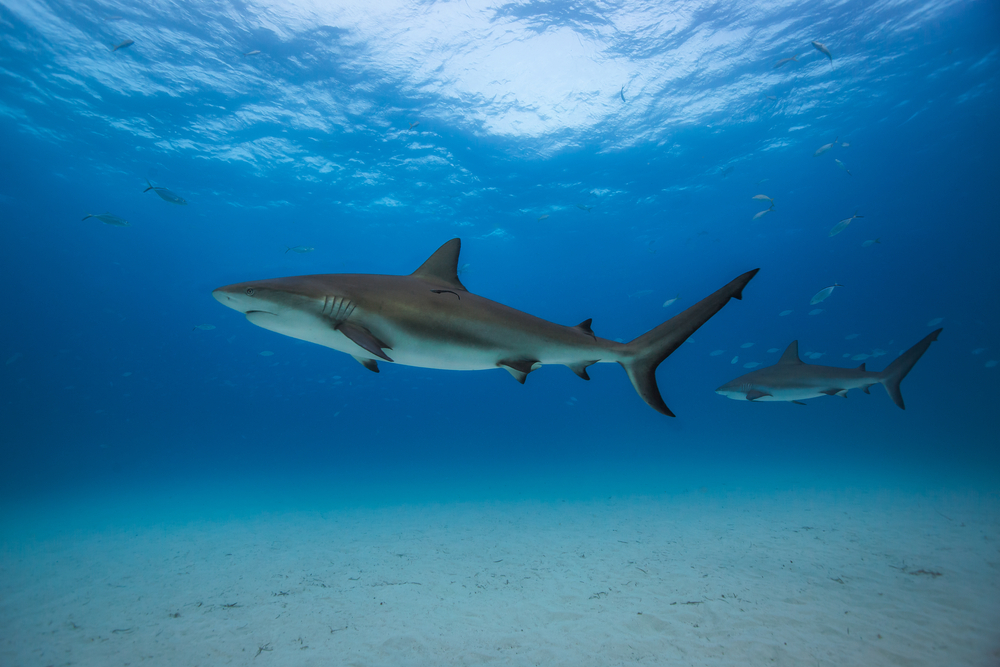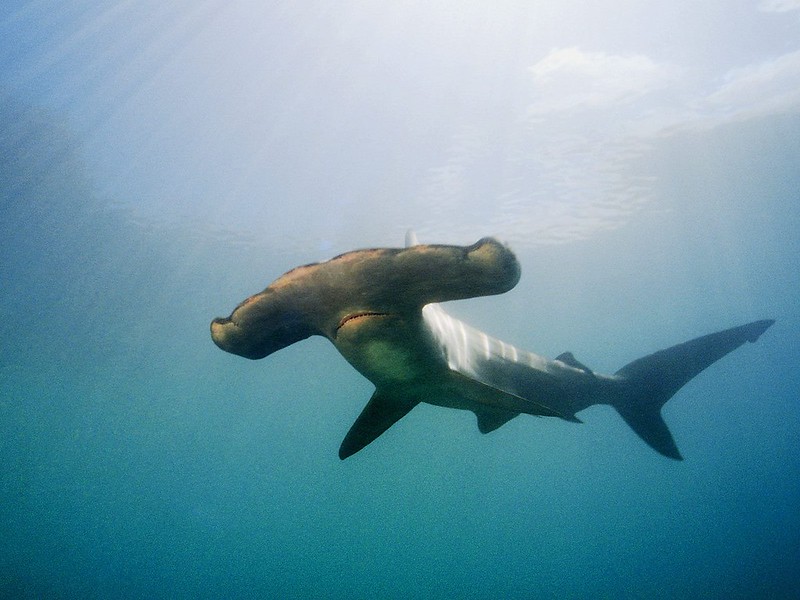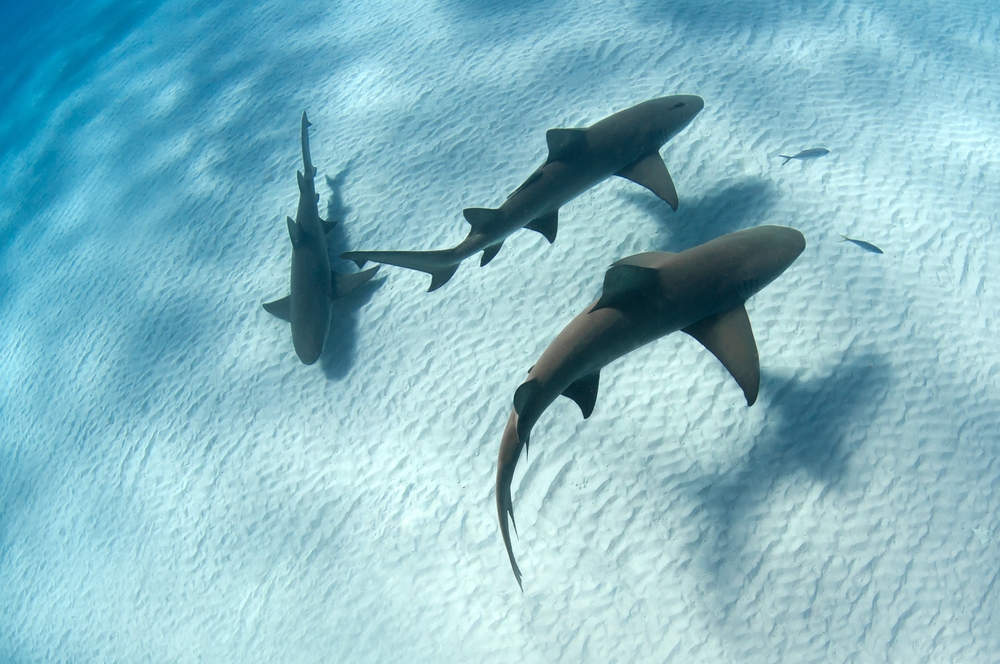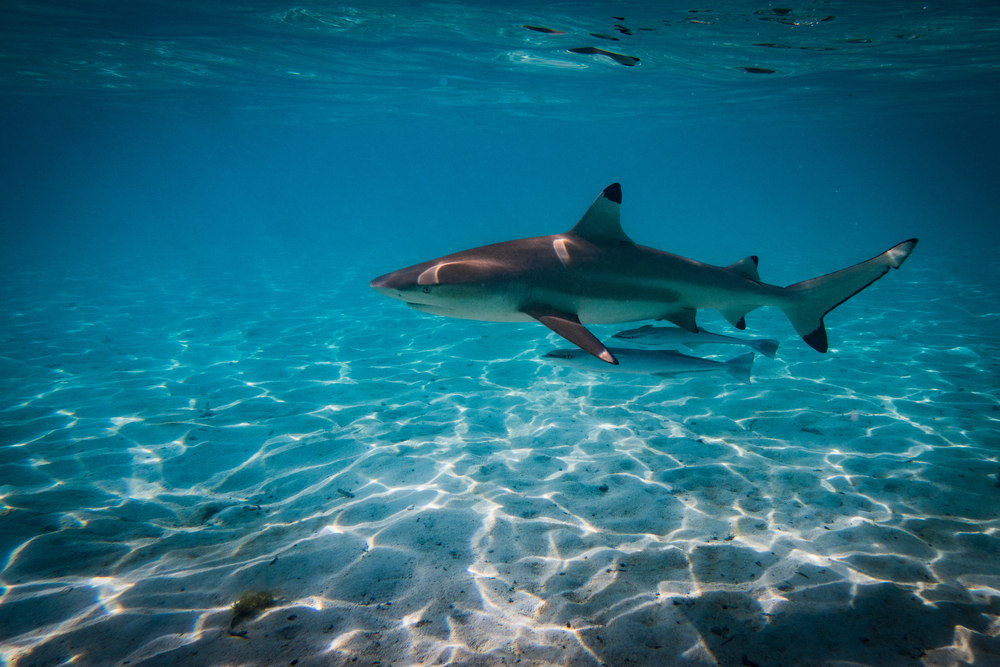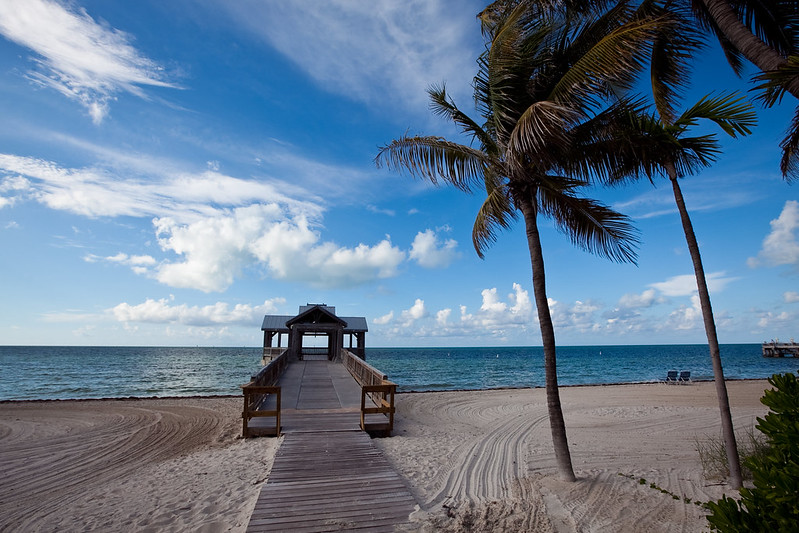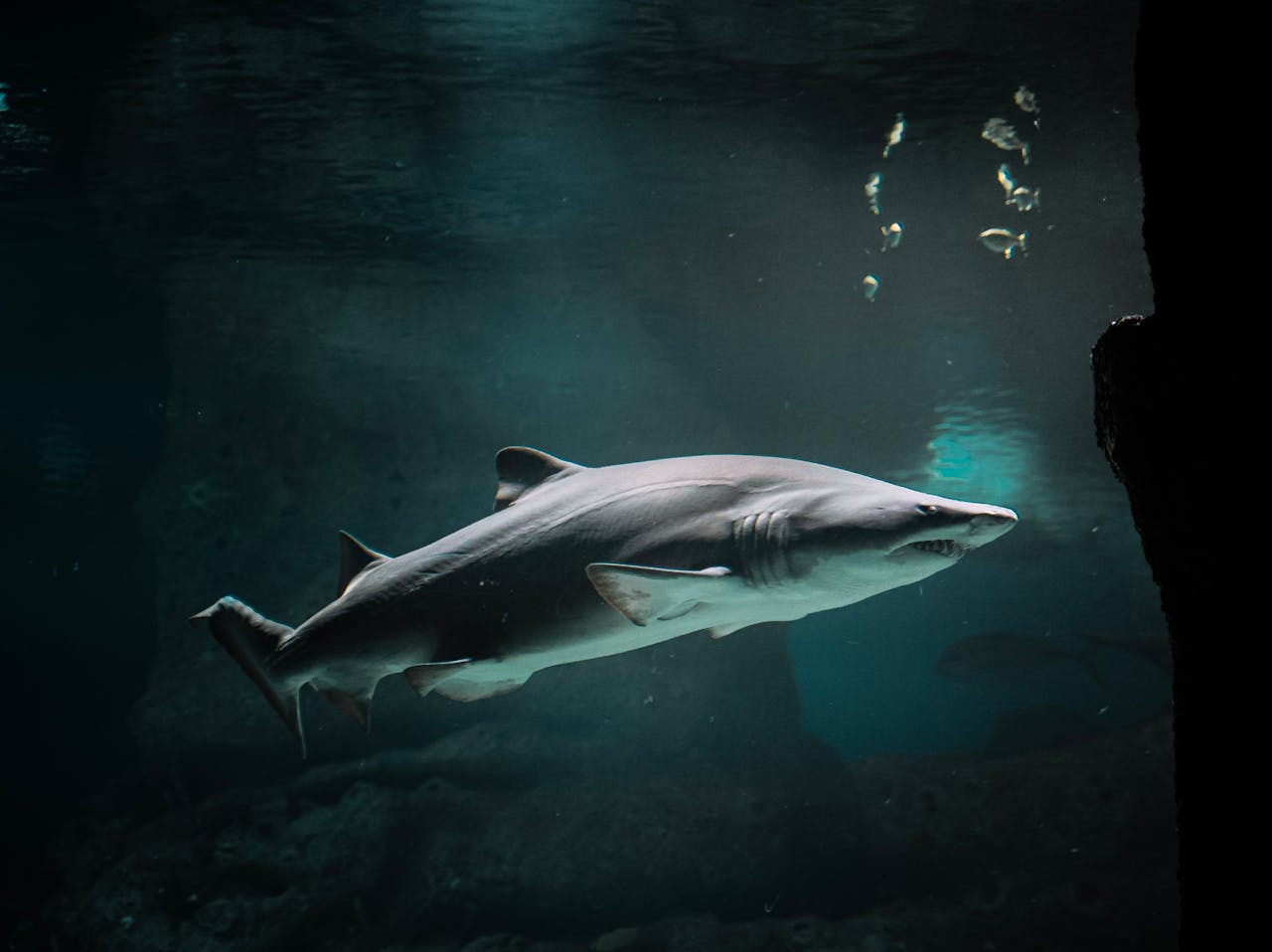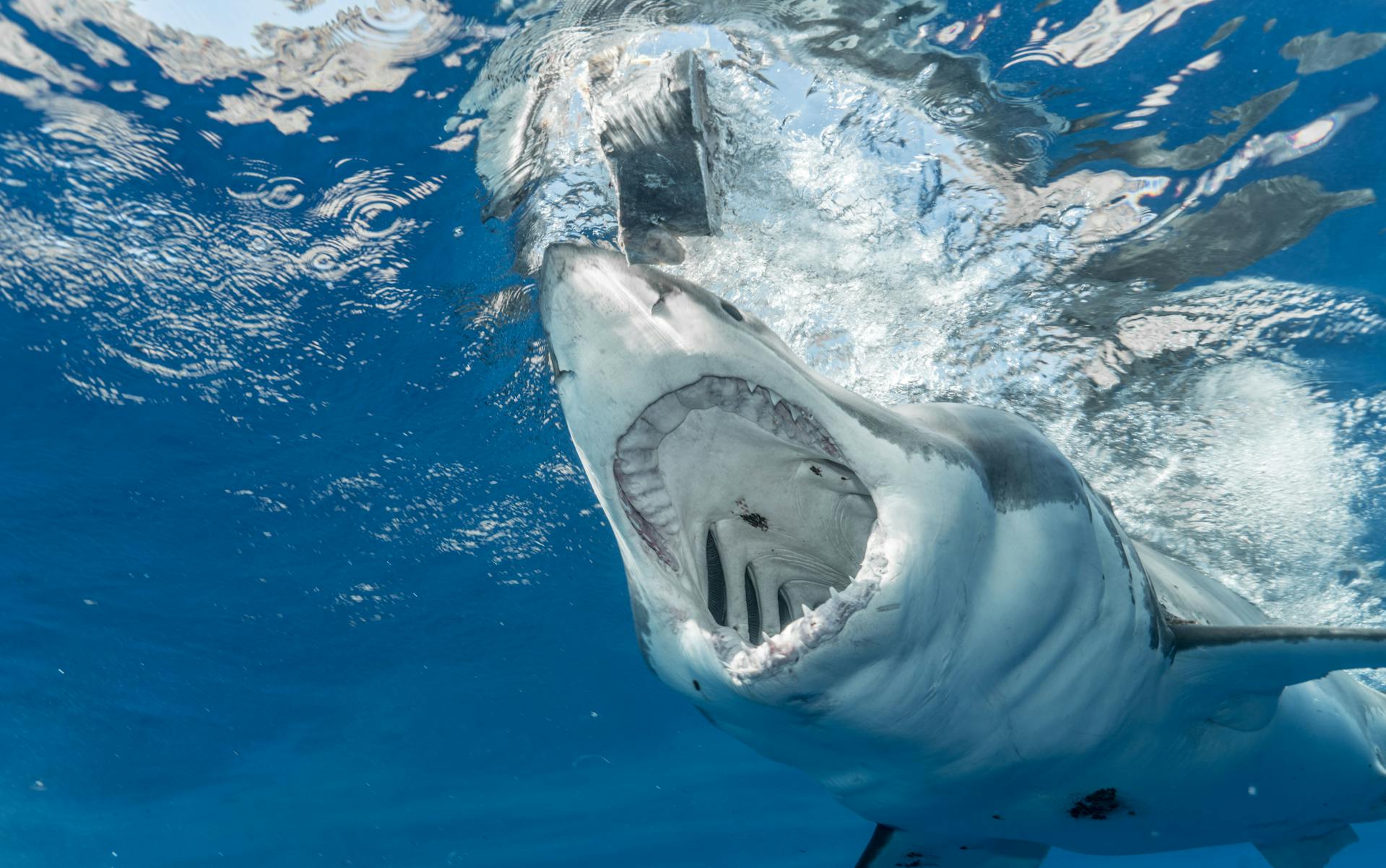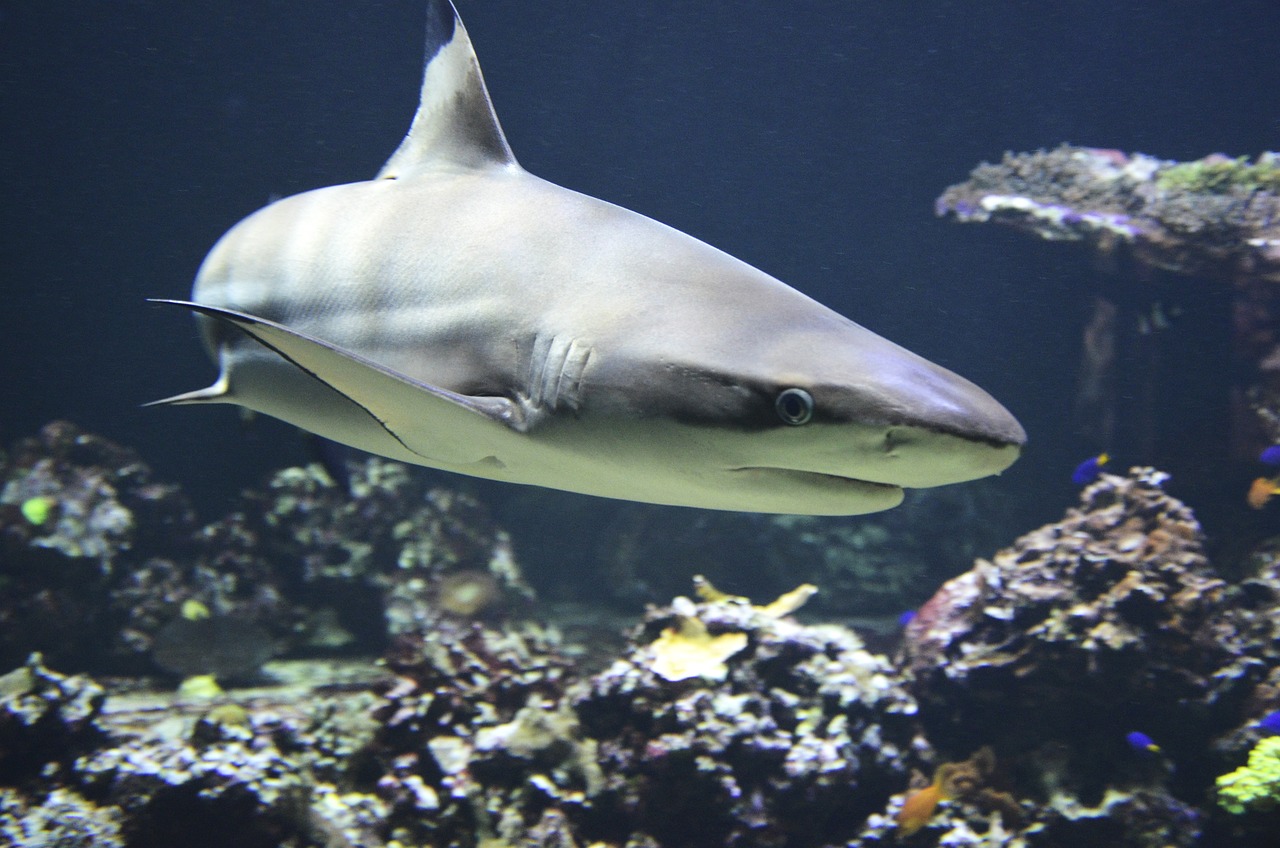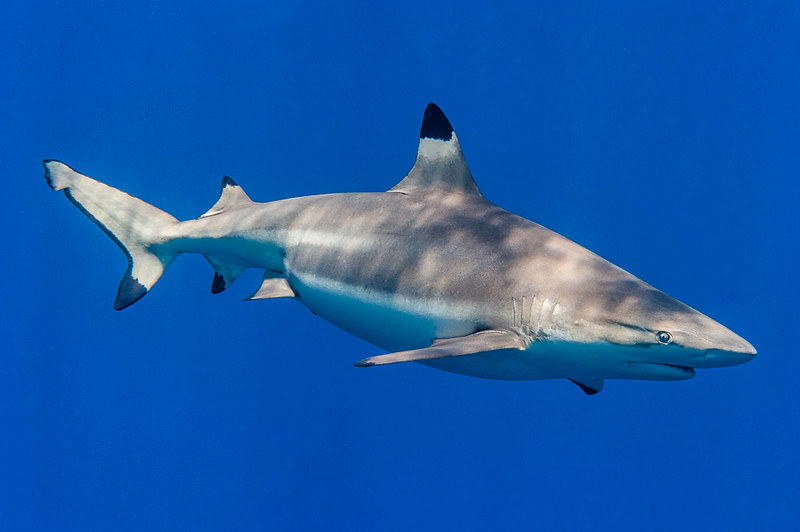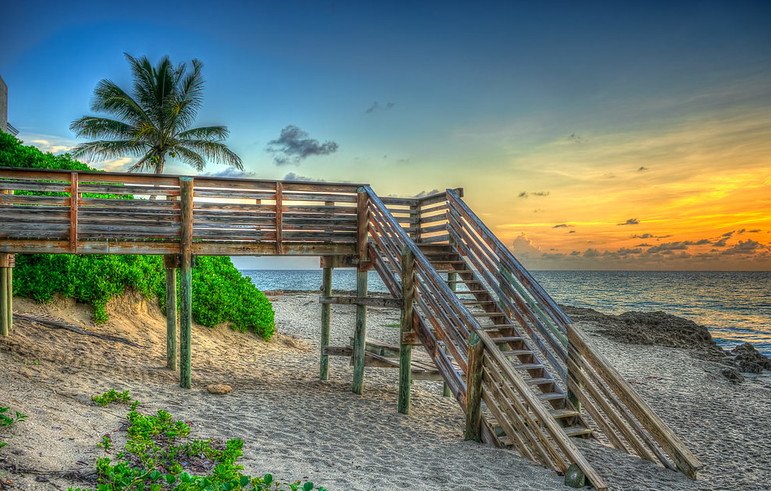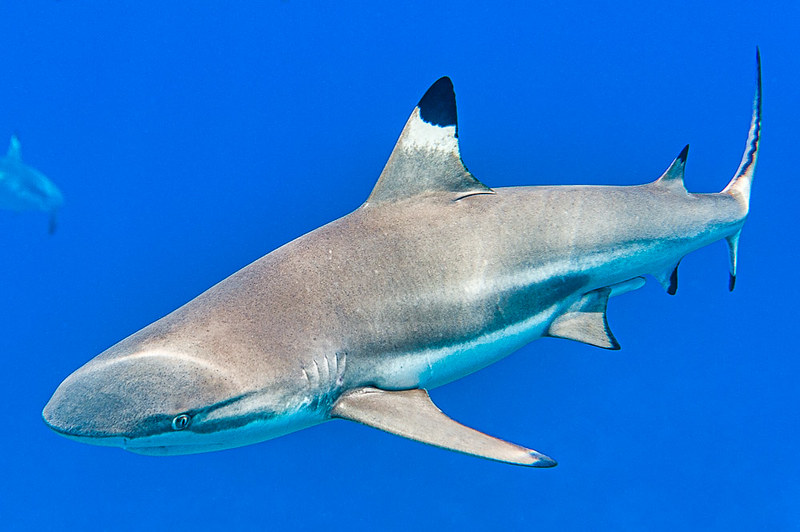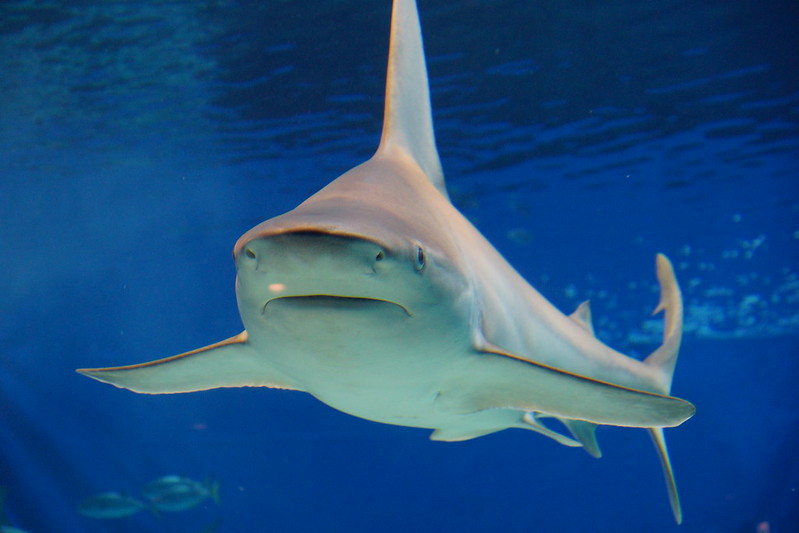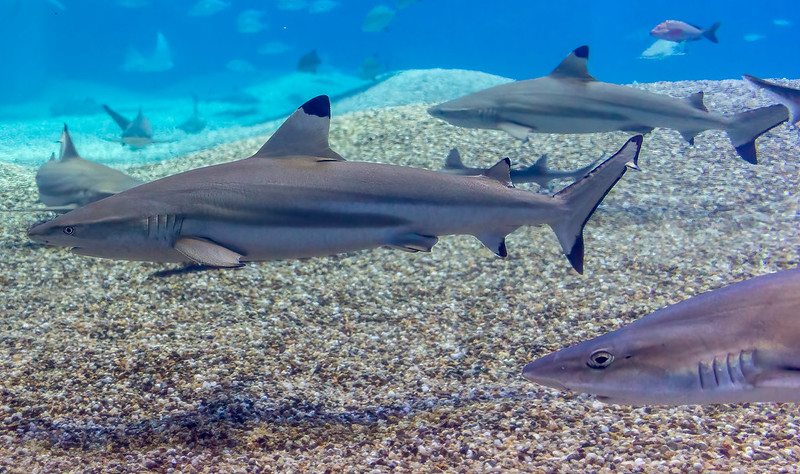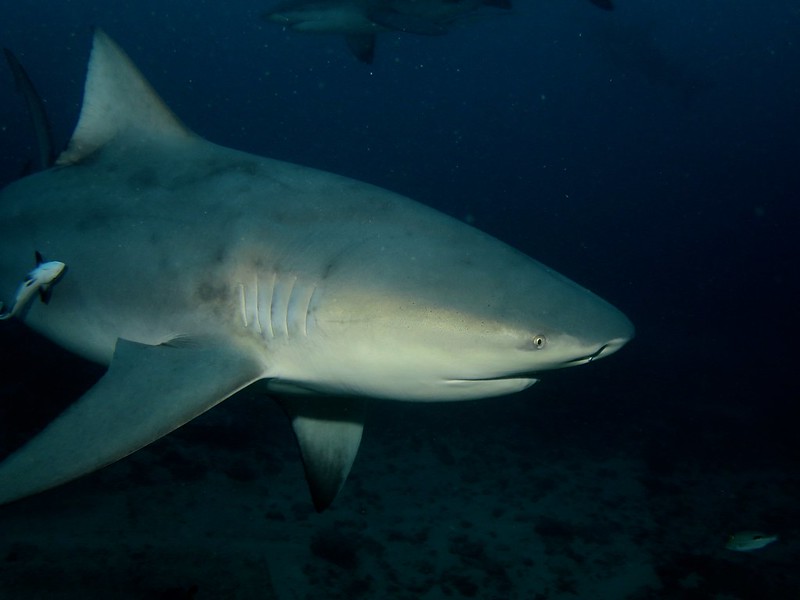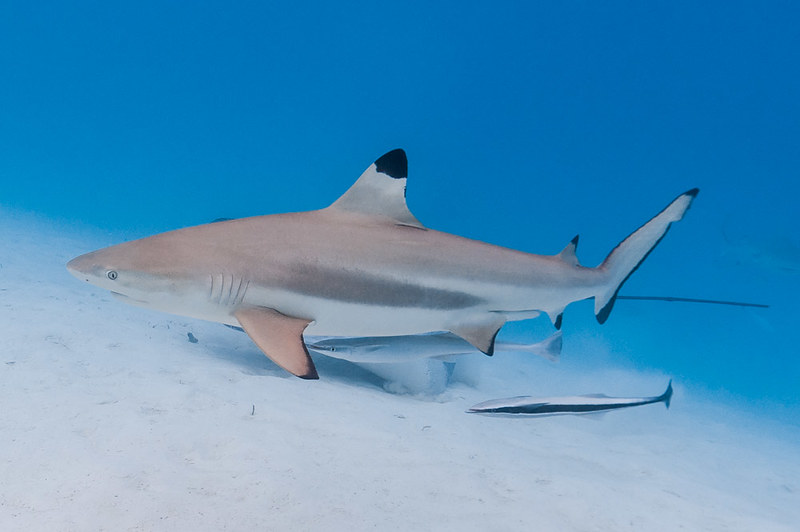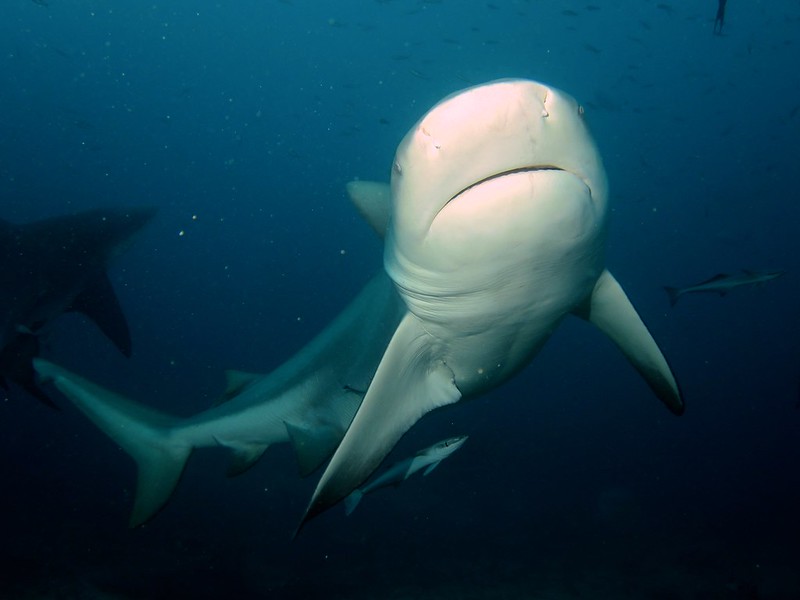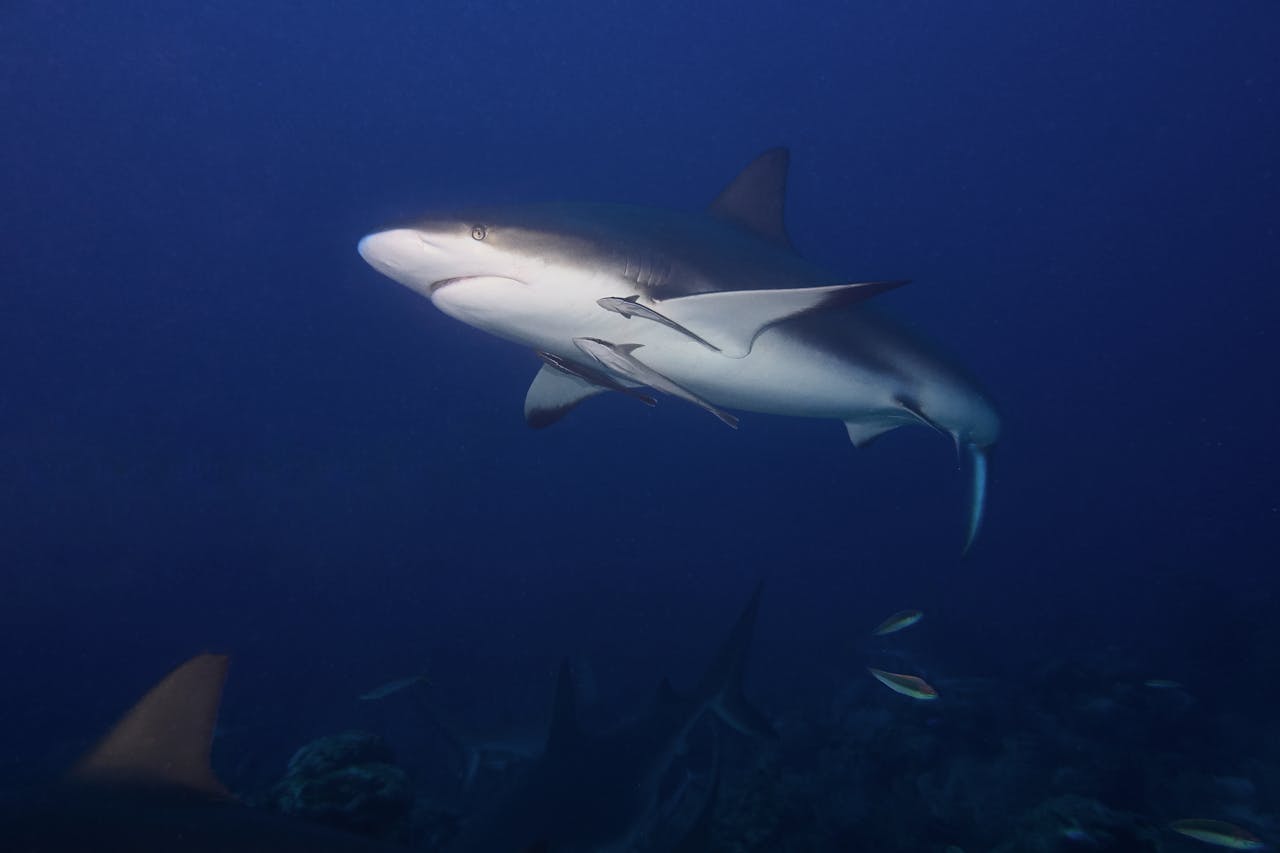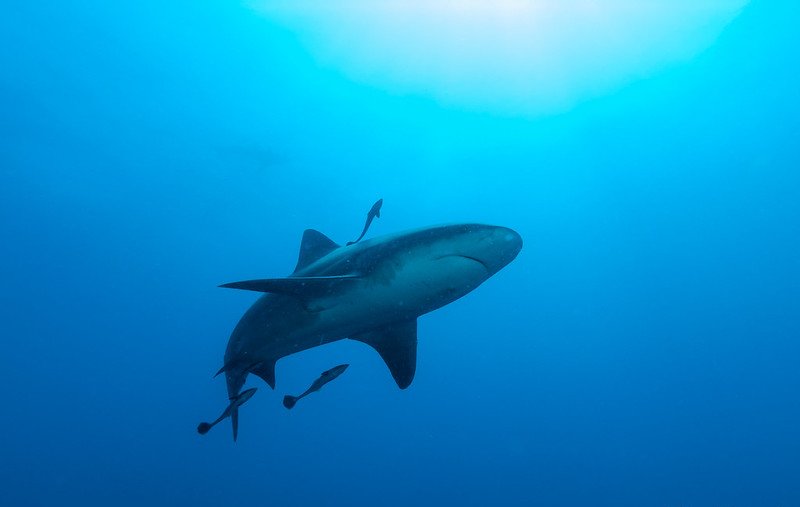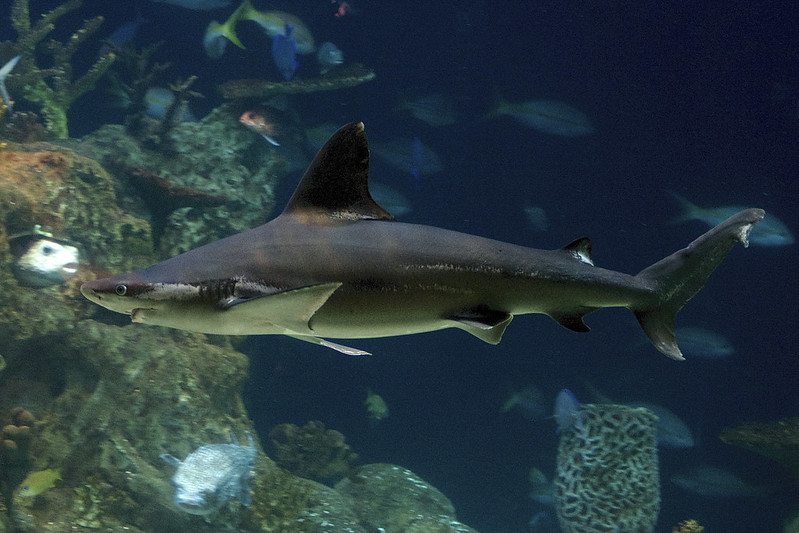Shark Attacks in Florida
The U.S. takes the lead once again, this time in number of unprovoked shark attacks.
Long term trends will show that the United States almost always takes first place with the most recorded, unprovoked shark bites in the world.
Let’s dive deeper into the current shark attack trend, including updated statistics, as well as which popular beaches to avoid for your next family vacation.

Current Statistics: USA
Let’s jump right in with 2023’s statistics.
The United States takes the lead in global, unprovoked shark attacks again in 2023, with a total of 36 confirmed cases. This is slightly lower than the 41 reported incidents recorded in 2022.
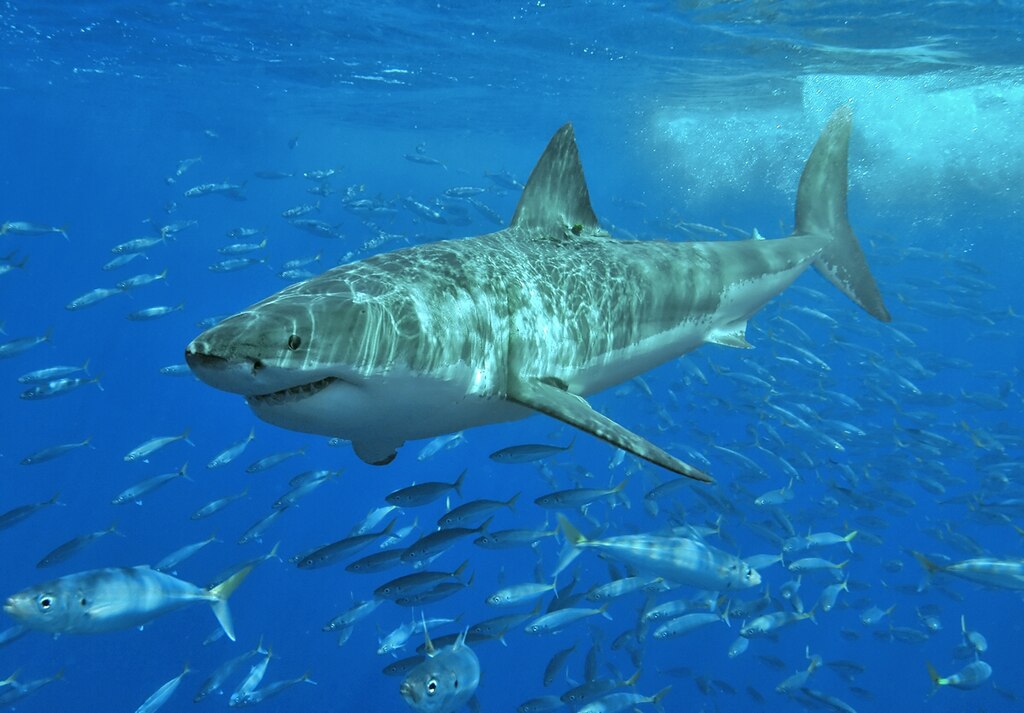 Terry Goss, CC BY-SA 3.0, Wikimedia Commons
Terry Goss, CC BY-SA 3.0, Wikimedia Commons
Current Statistics: Worldwide
Worldwide, there were a total of 120 shark-human interactions in 2023, with 69 of them confirmed as unprovoked. There were 14 confirmed shark-related fatalities that year, 10 of which were labelled as unprovoked.
Two of those fatalities were in the United Sates.
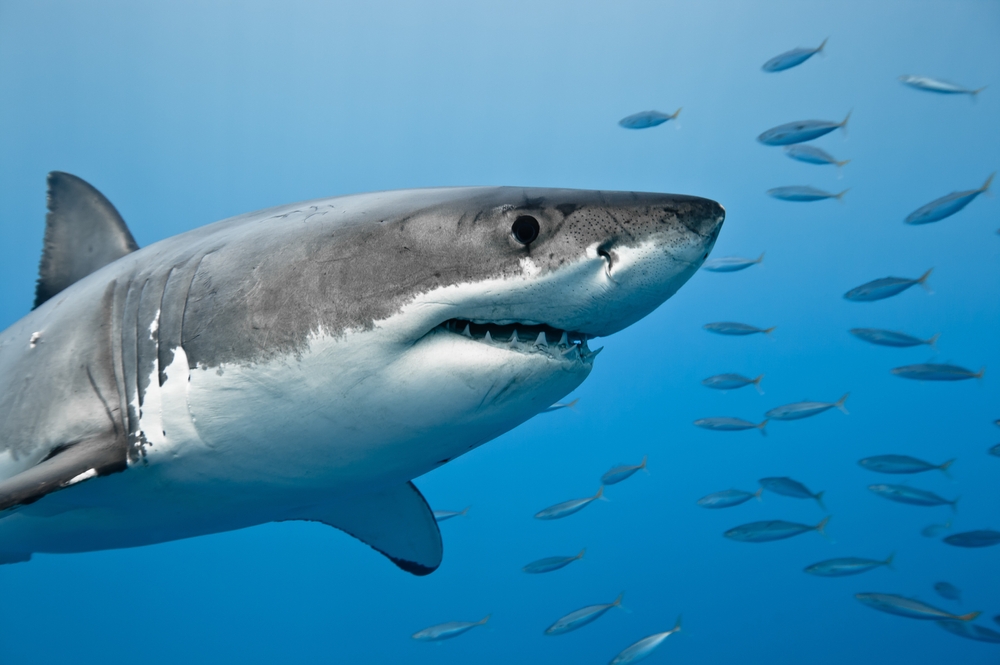 rameesha thisarindu, Shutterstock
rameesha thisarindu, Shutterstock
Averages Over a Five-Year Span
On average, there are about 16 shark attacks per year in the United States, with only one fatality occurring every two years.
Globally, there is an average of 63 incidents that are reported.
Most Common States for Shark Attacks
According to The International Shark Attack File (ISAF), the US states in which the most attacks have occurred are Florida, Hawaii, California, Texas and the Carolinas, though attacks have occurred in almost every coastal state.
The Number One State
The state that takes the lead in shark attacks is Florida, which has topped the charts for decades. Of the 36 confirmed shark attacks in the U.S. last year, 16 of them happened on Florida beaches.
That means Florida has had more shark attacks reported than any other state in the country.
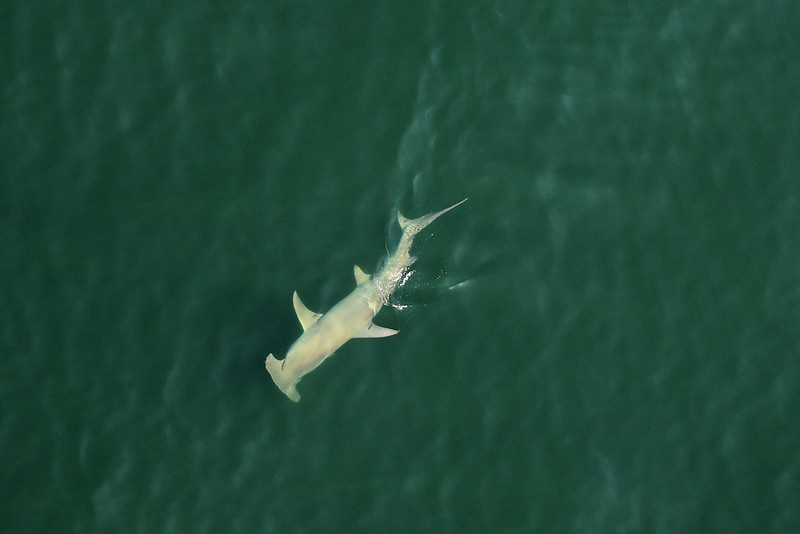 Florida Fish and Wildlife, Flickr
Florida Fish and Wildlife, Flickr
Other States with Shark Attacks
Aside from the 16 attacks in Florida last year, there were also 8 shark attacks in Hawaii, 4 in New York, 3 in North Carolina, 2 in California, 2 in South Carolina, and one in New Jersey.
Top 3 Florida Counties with Shark Attacks
Volusia, Brevard, and St. Lucie counties ranked among the top locations in the state for shark attacks. Volusia reported 8 shark attacks in 2023, and Brevard and St. Lucie each recorded 2 attacks.
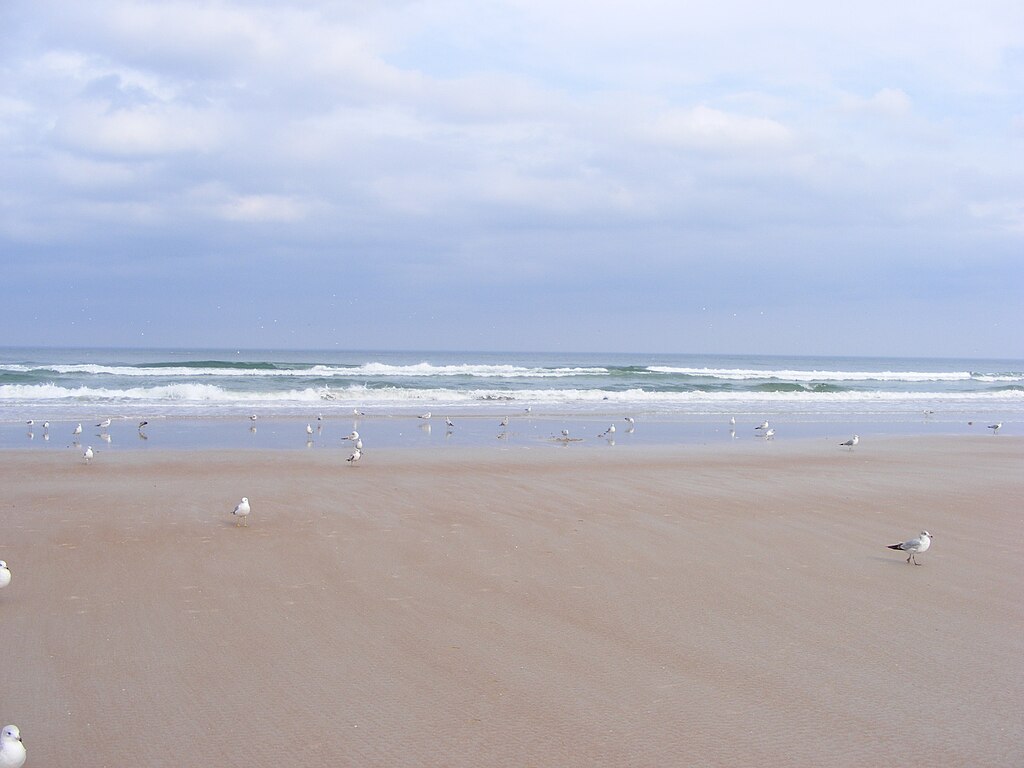 Gamweb, CC BY-SA 3.0, Wikimedia Commons
Gamweb, CC BY-SA 3.0, Wikimedia Commons
Other Florida Counties with Shark Attacks
Miami-Dade, Palm Beach, Pinellas, and Escambia all reported one shark attack in 2023. It’s important to remember that these numbers do not include shark sightings, or close encounters, which also happen quite often.
 Spcc111, CC BY-SA 4.0, Wikimedia Commons
Spcc111, CC BY-SA 4.0, Wikimedia Commons
Volusia County
Volusia County remains the top state for shark attacks as it has seen over 350 (of 1,000 global) attacks within the last century.
Because of this, Florida is often referred to as the “Shark Bite Capital of the World.”
 Mutaz Albar, CC BY 3.0, Wikimedia Commons
Mutaz Albar, CC BY 3.0, Wikimedia Commons
Most Common Florida Beaches for Shark Attacks: New Smyrna beach
The one beach responsible for the most shark attacks in the entire world is New Smyrna beach, located on Florida’s east coast, just south of Daytona beach.
It is said to be the epicenter of Florida’s shark activity.
Most Common Florida Beaches for Shark Attacks
Other popular beaches in Florida known for shark attacks include, Daytona beach, Ponce Inlet, Cocoa beach, and the Florida Keys.
Most Common Season for Shark Attacks
Specific to Volusia County, shark attacks are more often reported in September. Fall and summer seem to be the most popular seasons for shark encounters in Florida.
Most Common Time of Day for Shark Attacks
The ISAF reports that shark attacks happen most frequently between 11 a.m. and 5 p.m., likely due to the fact that more people are out at the beaches during those times.
Most Common Reason for Shark Bites
According to the ISAF, the vast majority of unprovoked attacks are “test bites,” which happen when a shark mistakes a human as another type of prey.
These bites can range from superficial to serious, depending on how strong the shark was and how long it held on for.
Specific Shark Attacks in Florida: Double Trouble
In 2023, within a span of 36 hours, two people were bitten by sharks in Key West. One was a 35-year-old man who was reportedly bitten in the foot while fishing off a dock.
The other was a 20-year-old man who was bitten while spearfishing in Marathon.
Specific Shark Attacks in Florida: One Girl, Multiple Bites
Also in 2023, a young 13-year-old girl was wading into the water with a friend, when she felt the first bite on her torso.
It only escalated from there.
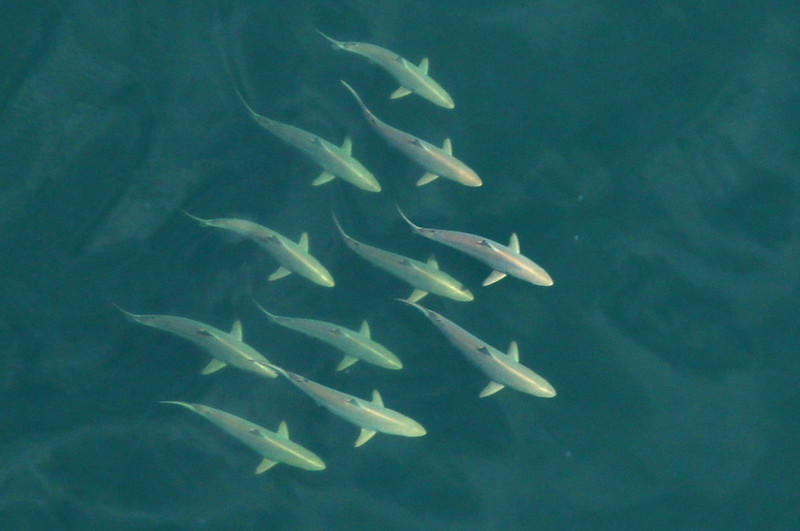 Florida Fish and Wildlife, Flickr
Florida Fish and Wildlife, Flickr
Specific Shark Attacks in Florida: One Girl, Multiple Bites
She told her friend to go to shore as she tried to fight off the shark, who then returned to bite her several more times in the hand, arm, and leg.
After commotion ensued, the 4-foot bull shark fled, leaving the girl with substantial injuries.
 Hermanus Backpackers, CC BY 2.0, Wikimedia Commons
Hermanus Backpackers, CC BY 2.0, Wikimedia Commons
Specific Shark Attacks in Florida: Man Bitten in Face
In September of 2023, a 38-year-old man was coming ashore after surfing when he was bit in the face by a shark.
He was in about 7-feet of water at the time, when he slid off his board and dipped under water, only to feel a sudden "crunch" on his face.
Specific Shark Attacks in Florida: Man Bitten in Face
The man said it felt like “a bear trap” crunched down on his face. He didn’t see the shark, as it happened fast. He believes he fought off the shark and then instantly swam to shore where he was taken to a hospital and received over 20 stitches on his face.
He was the seventh victim of 2023.
Specific Shark Attacks in Florida: Sitting in the Water
In July of 2023, a 48-year-old man was simply sitting in the water at New Smyrna Beach, when a shark approached from behind and bit him in the back. Although he bled a lot, he did not have serious injuries.
The day before, another person was attacked.
 Gary J. Wood, CC BY-SA 2.0, Wikimedia Commons
Gary J. Wood, CC BY-SA 2.0, Wikimedia Commons
Specific Shark Attacks in Florida: Surfing
The day before the sitting man was attacked, a 21-year-old man was surfing when he was attacked. His injuries were substantial and required extensive medical care.
He was at the same beach as the other man when this happened.
Most Dangerous Shark
As of April 2021, the great white shark is responsible for the highest number of unprovoked attacks with 333 total events including 52 fatalities.
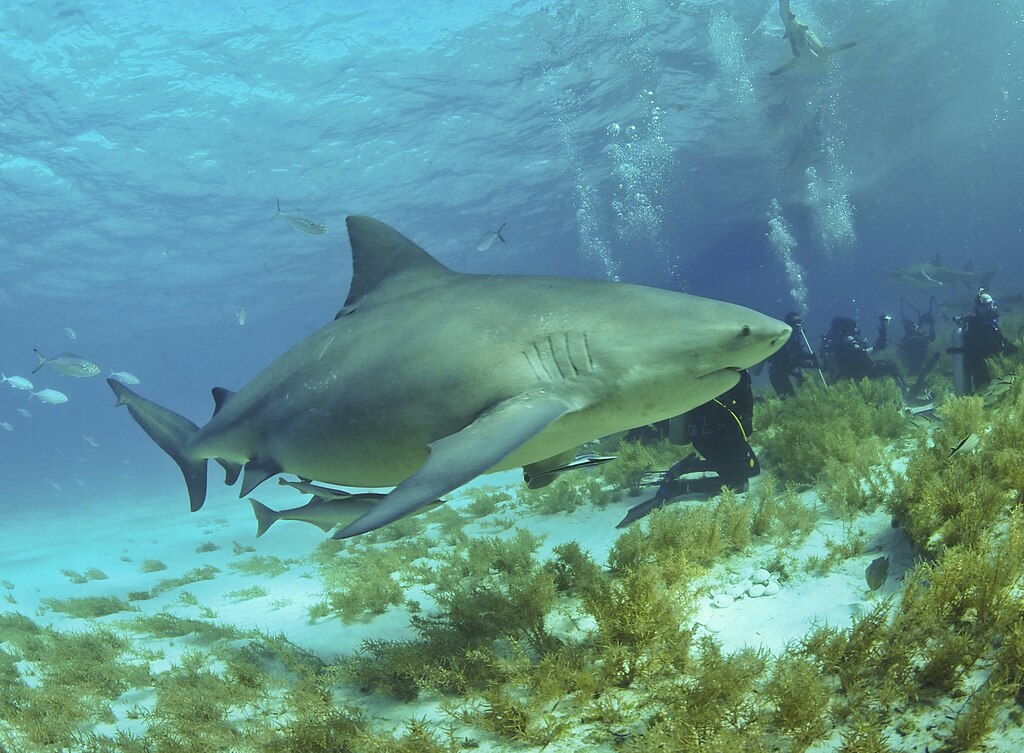 Albert Kok~enwiki, CC BY-SA 4.0, Wikimedia Commons
Albert Kok~enwiki, CC BY-SA 4.0, Wikimedia Commons
Shark Species in Florida
Most shark attacks in Florida are perpetrated by Requiem shark species, accounting for 36% of attacks. Specifically, Bull sharks and Blacktip sharks. Tiger sharks are also common attackers.
It is important to note that all species of sharks are capable of biting humans if provoked.
Fatalities in Florida
Between 2010 and 2019, data shows that only 6.8% of attacks during that time frame were fatal.
Most attacks result in serious injuries, though, many of which involve limb amputations.
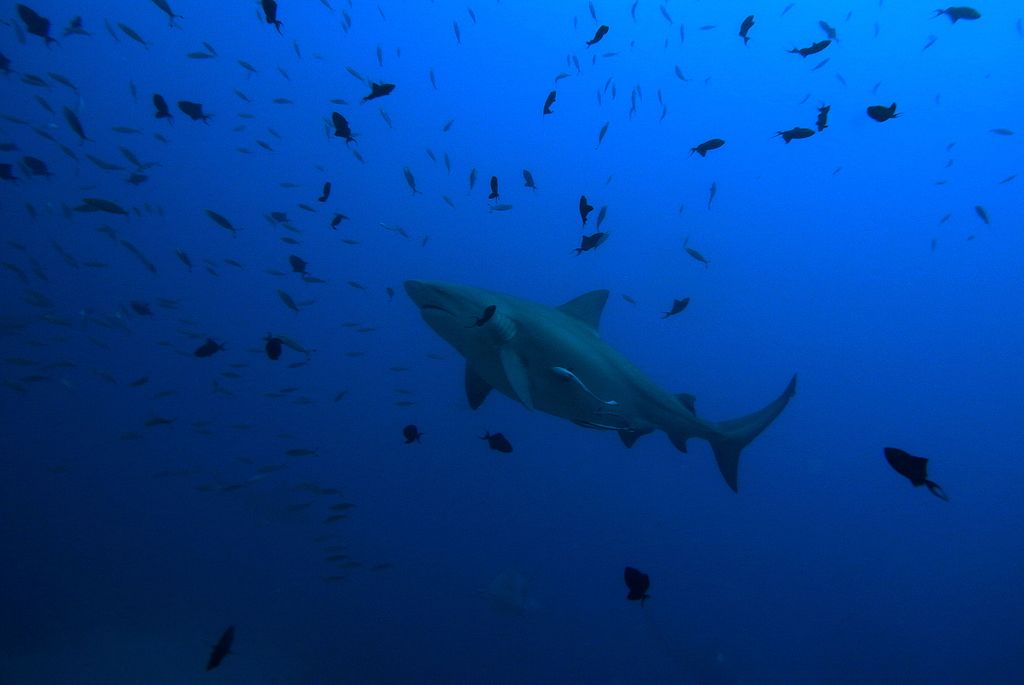 Sylke Rohrlach, CC BY-SA 2.0, Wikimedia Commons
Sylke Rohrlach, CC BY-SA 2.0, Wikimedia Commons
Specific Fatal Incidents in Florida
The last fatal attack in Florida was in 2010 when a 38-year-old man was kiteboarding. Upon landing in the water, the man was attacked by at least one shark, just off Stuart beach, though some witnesses believe there was more than one shark present.
The shark was reportedly, "large and relentless." He lost too much blood and did not survive.
How Shark Attacks Happen
Most shark bites in Florida are associated with surfing and board sports.
Of all the attacks in Florida in 2023, nearly half of them (42%) involved the victim surfing at the time of the encounter.
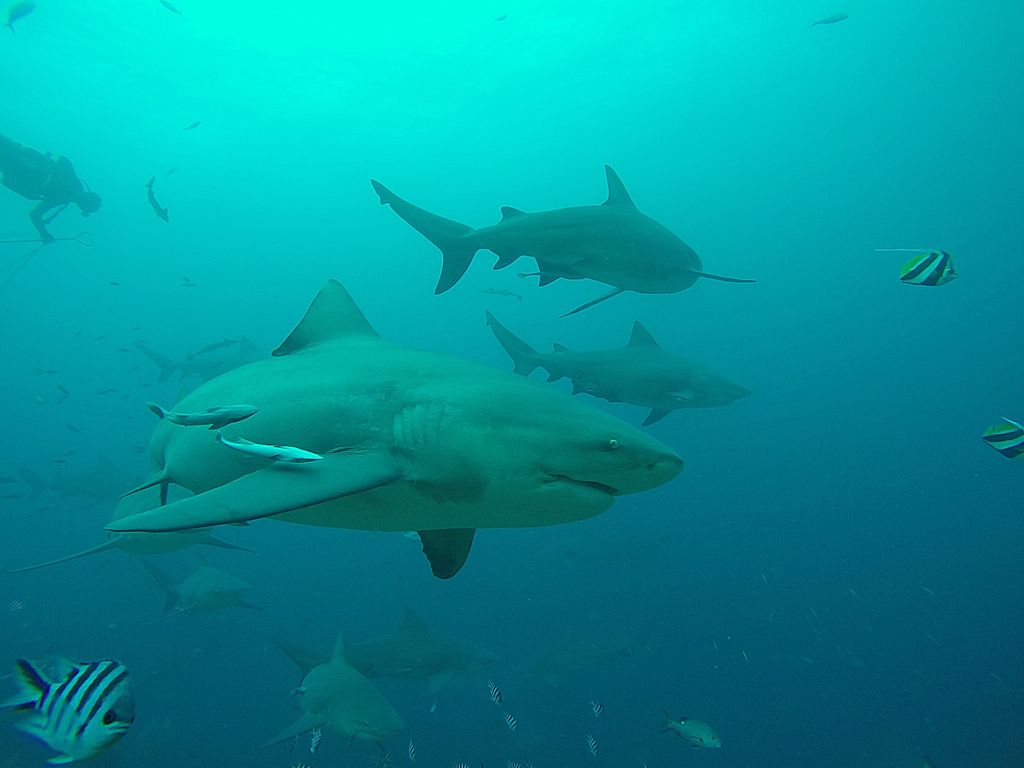 amanderson2, CC BY 2.0, Wikimedia Commons
amanderson2, CC BY 2.0, Wikimedia Commons
How They Happen Cont’d
About 39% of the attacks occurred while the victims were swimming or wading into the water, and 13% happened while the victims were snorkeling or free-diving.
Why Sharks Are Common in Florida: Migration
Florida has one of the largest year-round concentrations of sharks.
Scientific data from the Florida Fish & Wildlife Conservation Commission shows that many shark species migrate in and out of Florida's waters each year.
 Michael Rivera, CC BY-SA 3.0, Wikimedia Commons
Michael Rivera, CC BY-SA 3.0, Wikimedia Commons
Why Sharks Are Common in Florida: Temperatures and Prey
Shark migrations are usually linked to water temperatures, and the presence of prey, such as mullet, sardines, menhaden and other species of baitfish that are common in Florida waters.
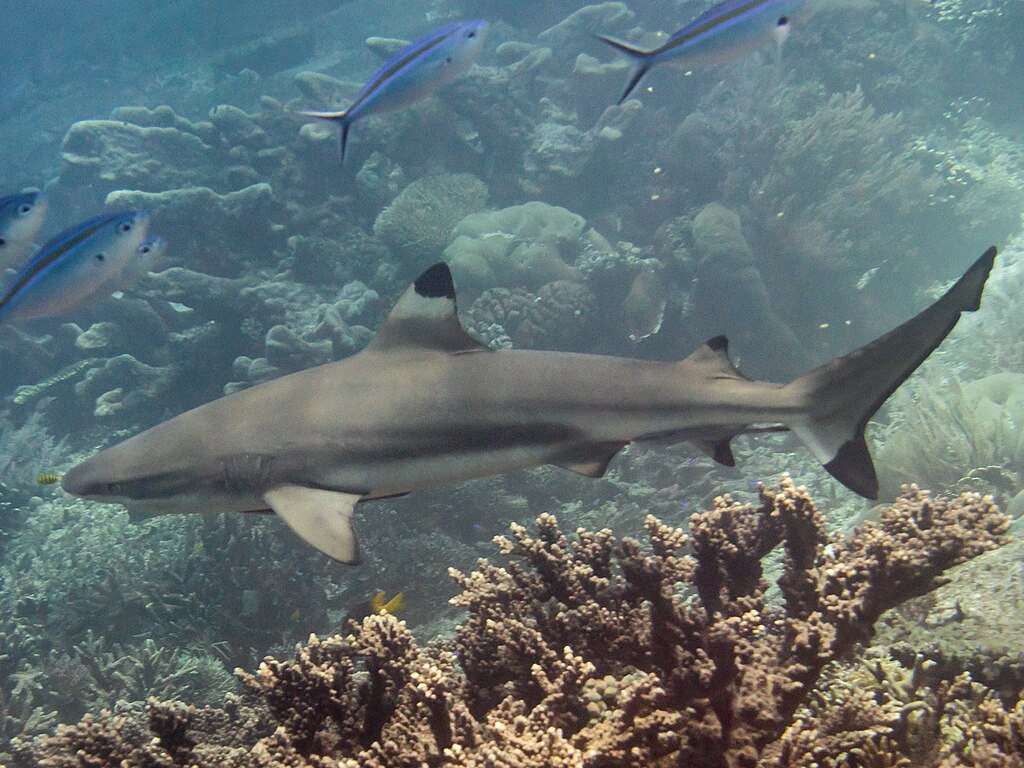 Rickard Zerpe, CC BY 2.0, Wikimedia Commons
Rickard Zerpe, CC BY 2.0, Wikimedia Commons
Proximity to Shore
Sharks usually stay within a range of 60-100 feet from shore. However, the Florida Museum of Natural History research has found that most shark attacks occur within 6 to 10 feet of land.
 Todd Van Hoosear, CC BY-SA 2.0, Wikimedia Commons
Todd Van Hoosear, CC BY-SA 2.0, Wikimedia Commons
How to Avoid Shark Attacks: Groups
Always stay in groups. Sharks are more likely to attack individuals who are swimming alone.
Also, avoid wandering too far from shore as this will further isolate you, making you an easier target and putting you further away from help.
How to Avoid Shark Attacks: Avoid Bleeding
Avoid going into the water with open wounds that are either currently bleeding or had recently been bleeding. Sharks are drawn to blood.
This is also the case for individuals who may be menstruating.
How to Avoid Shark Attacks: What You Wear
Avoid wearing shiny jewelry, sequins or other shiny materials that may attract sharks. At the same time, be mindful of excessive splashing which originally calls the sharks attention, who is then drawn to the shiny objects.
What To Do If You Encounter a Shark
If you happen to come across a shark while enjoy the afternoon at a Florida beach, it is imperative that you do the following:
- Displace the least amount of water possible: avoid splashing and thrashing about in a panic
- Maintain eye contact: As you very slowly and gently ease backward, do not lose sight of the shark
What To Do If You Encounter a Shark Cont’d
- Position your body to face the shark: this lets the shark know you are aware of its presence
- Move slowly: If you can, slowly and gently move backward to shore, without splashing, yelling, or looking away from the shark
What To Do If You’re Being Attacked by a Shark
Truthfully, if a shark is going to attack you there is not much you can do to escape. You cannot outswim a shark. But there are a few things you could do to boost your chances of staying alive.
Neil Hammerschlag, director of the Shark Research and Conservation Program at the University of Miami Rosenstiel School has a few suggestions for people who encounter sharks.
 Bmcnoldy, CC BY-SA 4.0, Wikimedia Commons
Bmcnoldy, CC BY-SA 4.0, Wikimedia Commons
What To Do If You’re Being Attacked by a Shark: Fight Back
First of all, do not play dead. Bears and sharks are very different animals. If you are being actively attacked by a shark, you are to fight back.
You’ll want to punch, kick, and poke at sensitive spots, such as the gills and eyes. But there is one spot to try and avoid.
What To Do If You’re Being Attacked by a Shark: Avoid the Mouth
Avoid the mouth at all costs. Depending on the size of the shark, this may be impossible. If you were brawling with a great white, your chances of survival are already slim, and the mouth would likely be impossible to avoid.
However, if you’re up against a smaller species of shark, you’ll want to focus your attention away from the mouth.
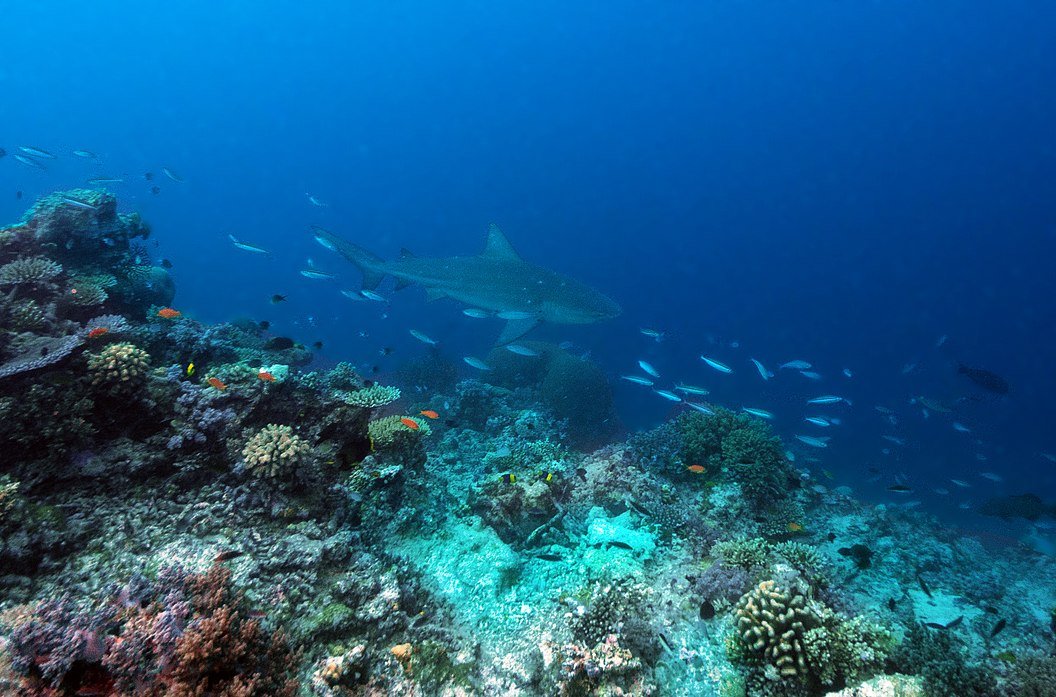 Holobionics, CC BY-SA 4.0, Wikimedia Commons
Holobionics, CC BY-SA 4.0, Wikimedia Commons
What To Do If You’re Being Attacked by a Shark: Use What You Have
Since sharks don’t have arms and legs, they’re only option is their mouth. Humans have an advantage by having limbs.
In addition to using your arms and legs, use something else you may have. If you’ve been snorkeling, use your snorkel to forcefully poke the sides of the shark.
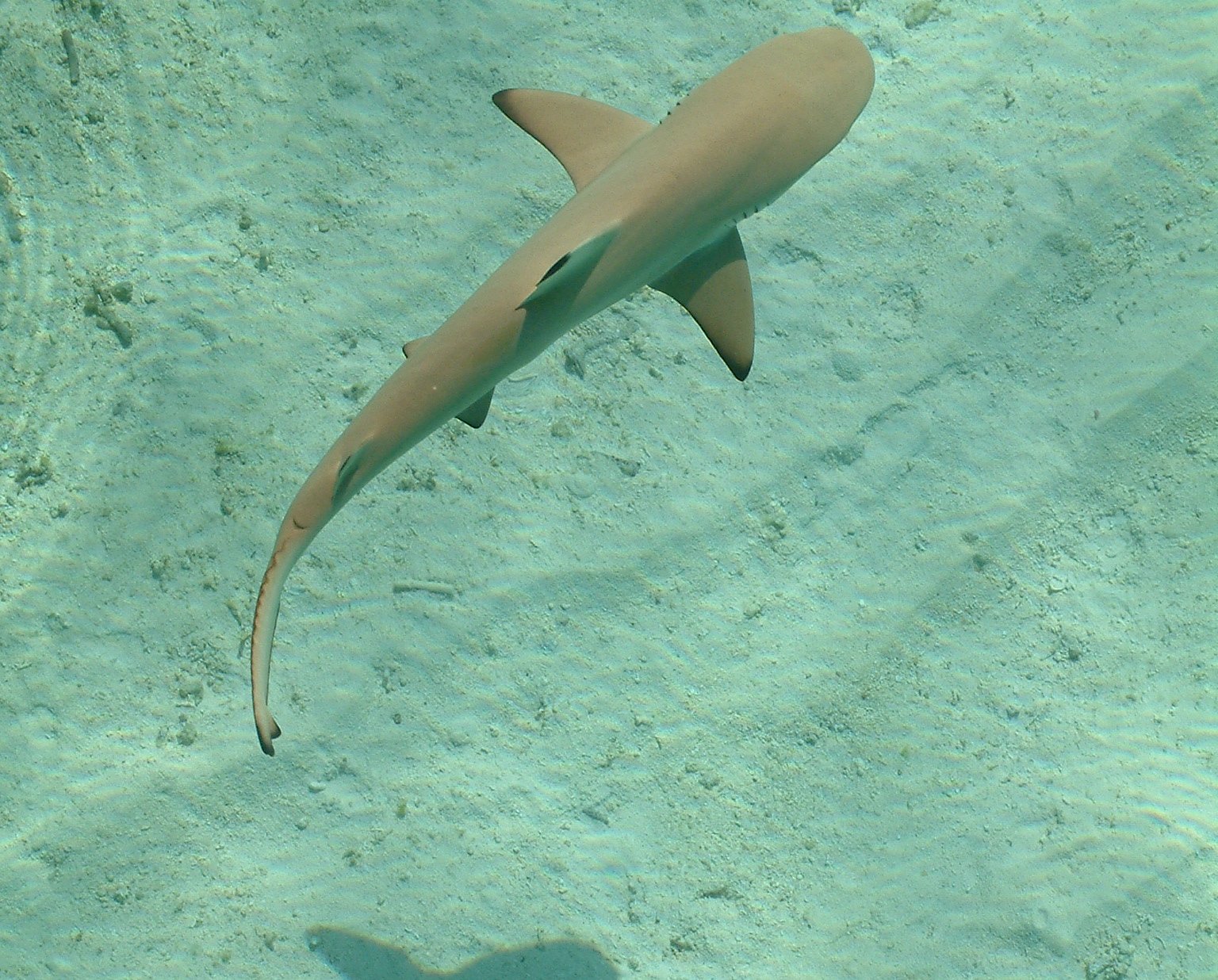 Uxbona, CC BY-SA 3.0, Wikimedia Commons
Uxbona, CC BY-SA 3.0, Wikimedia Commons
What To Do If You’re Being Attacked by a Shark: Diving
If you come across an aggressive shark while diving, it is best to cut off as many angles as possible. This means, situate yourself so that the shark cannot get behind you. Get closer to the sea floor, or a coral reef.
The Likelihood of Escaping a Shark Attack
While all of the above suggestions may help to a degree, the truth is, the likelihood of escaping a big shark attack without injury is slim.
Specifically, if a great white shark is in full attack mode—there isn’t much you’re going to be able to do at that point.
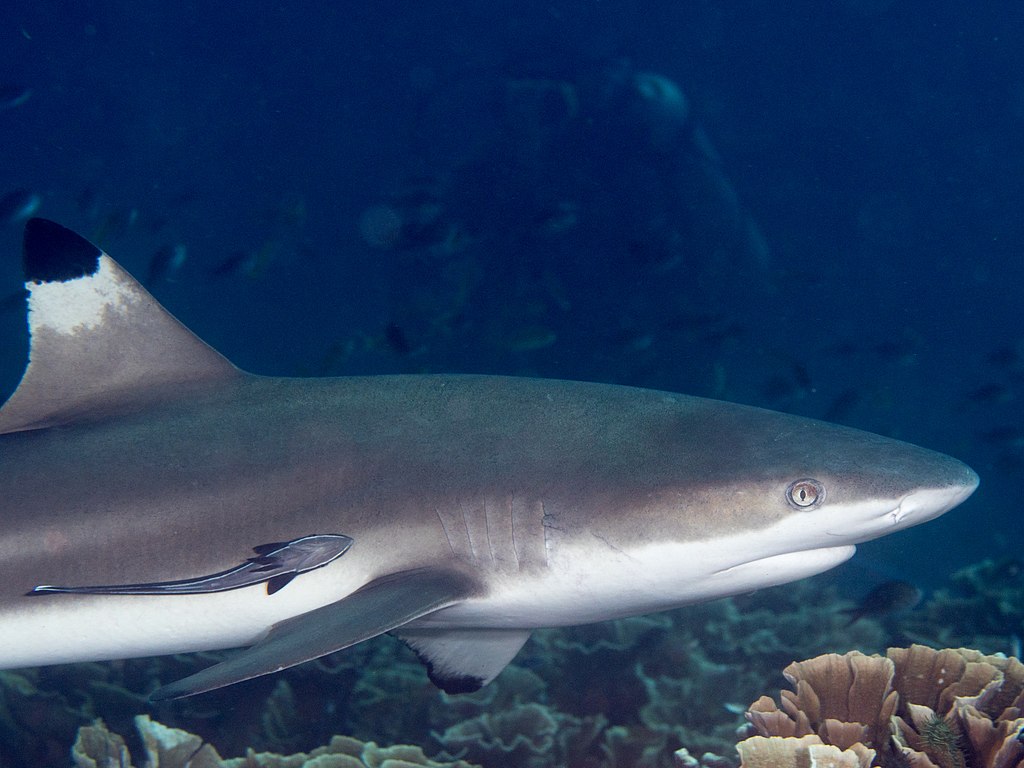 Rickard Zerpe, CC BY 2.0, Wikimedia Commons
Rickard Zerpe, CC BY 2.0, Wikimedia Commons
The Chances of Being Attacked
Although shark attacks do happen, it is important to remember that they are actually very rare.
In fact, according to the International Wildlife Museum, the chances of being attacked and killed by a shark are one in 3.75 million.
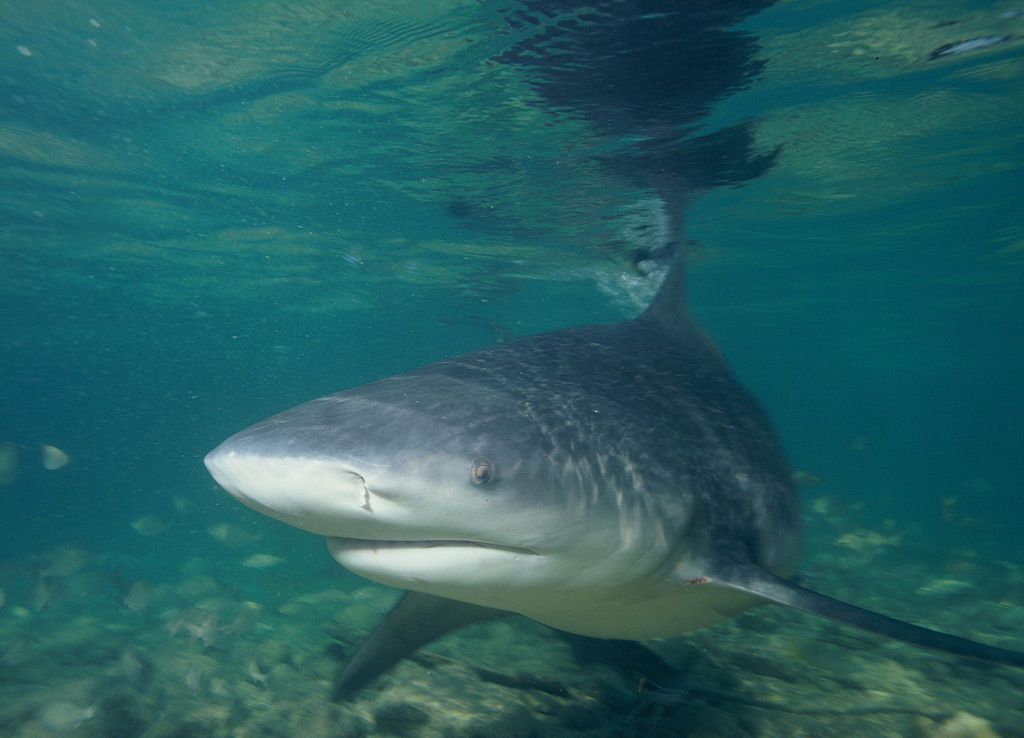 Unknown Author, Wikimedia Commons
Unknown Author, Wikimedia Commons
Final Thoughts
With that said, the number of shark attacks globally is increasing annually. It is important to take precautions when swimming in waters where shark attacks are more likely to occur.


